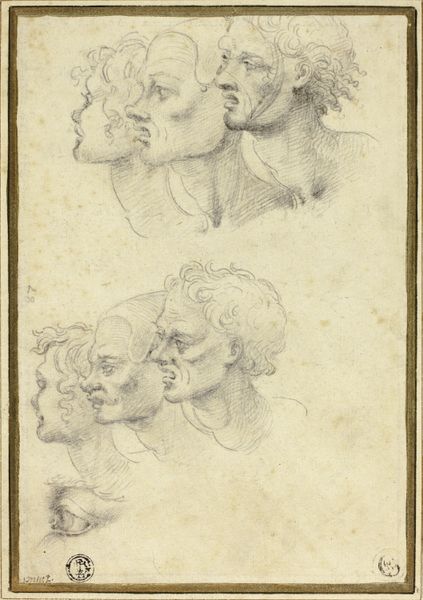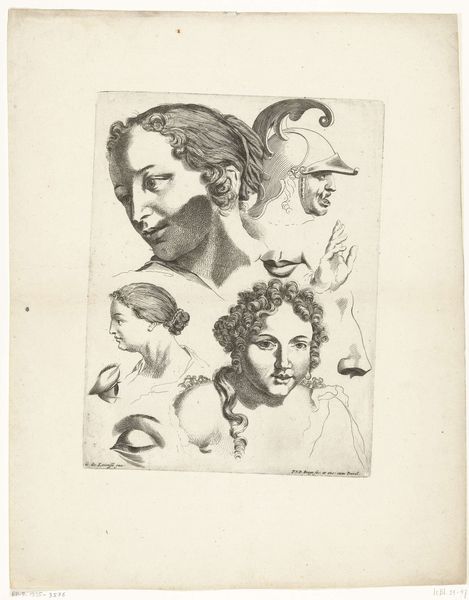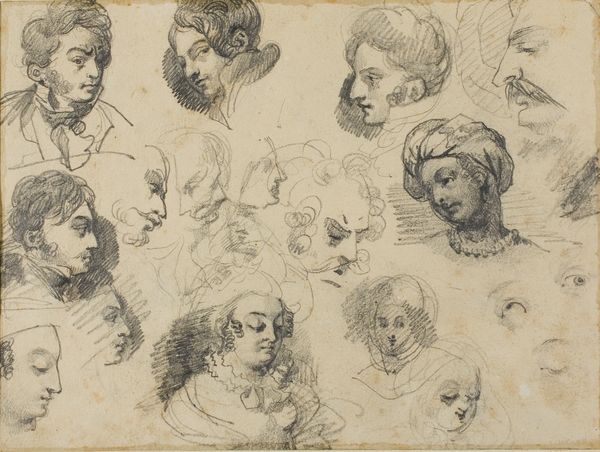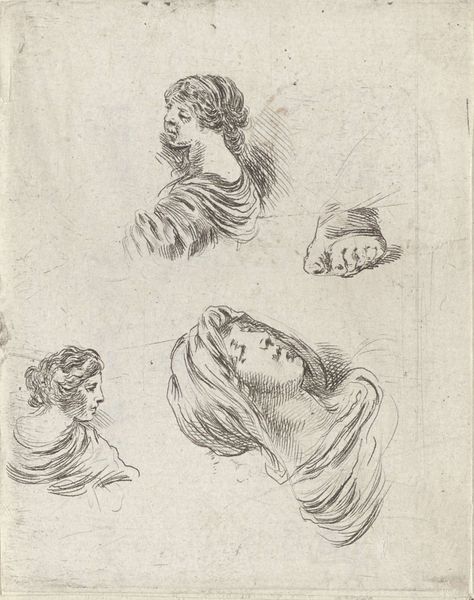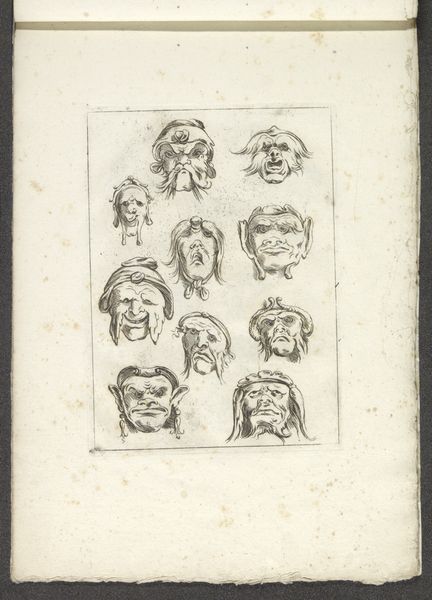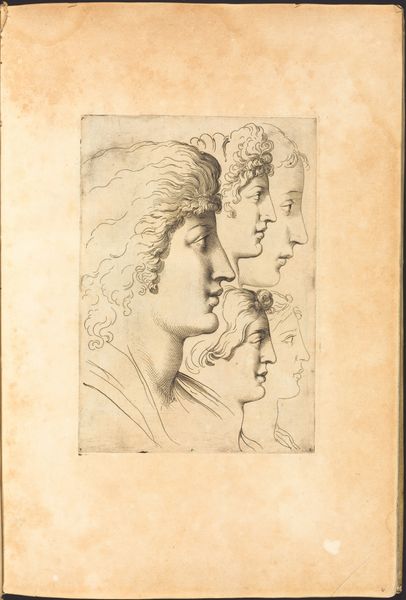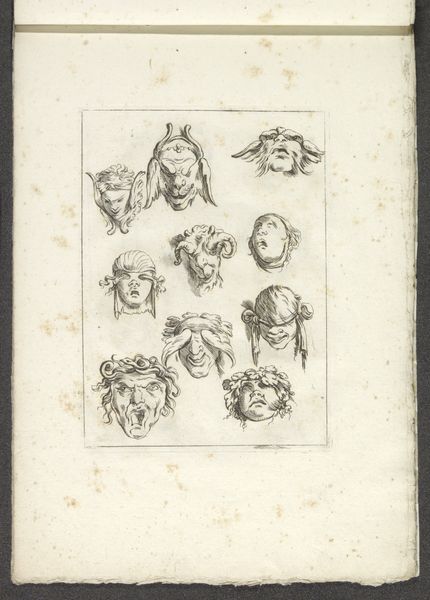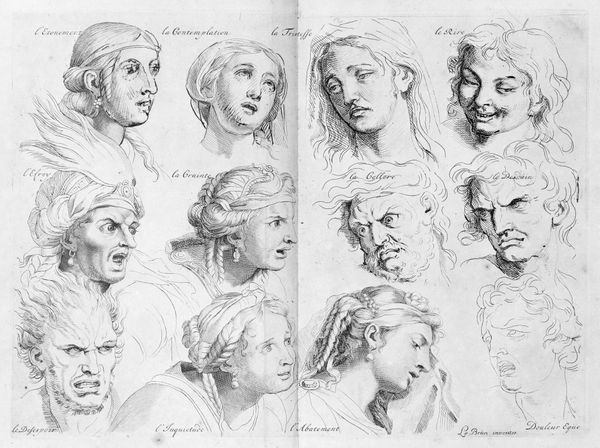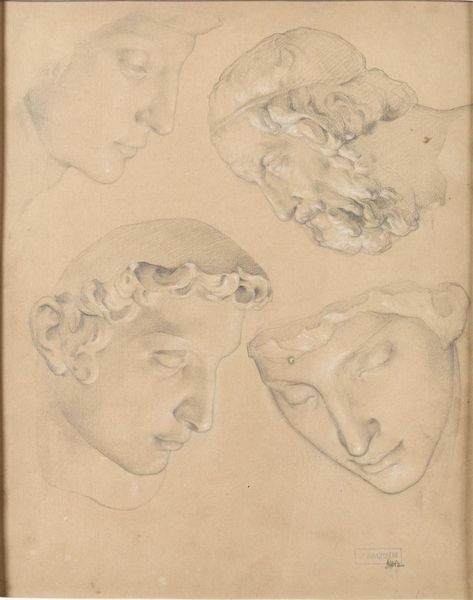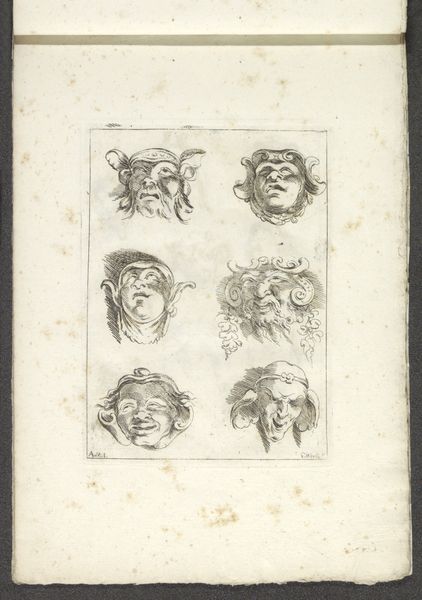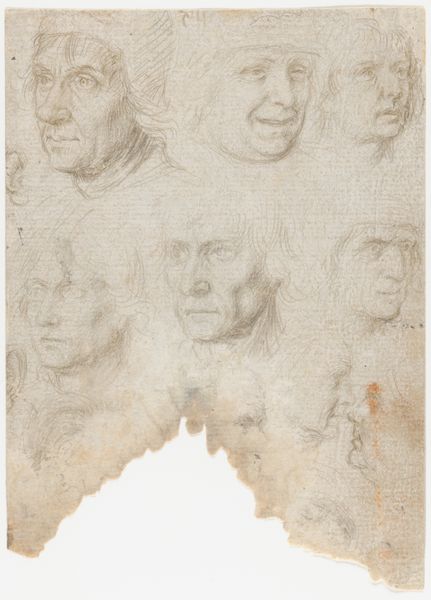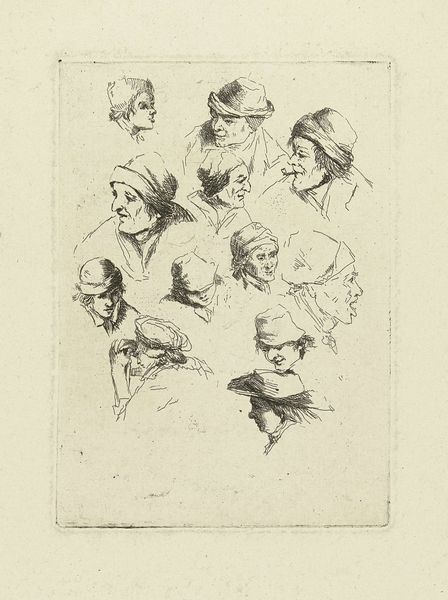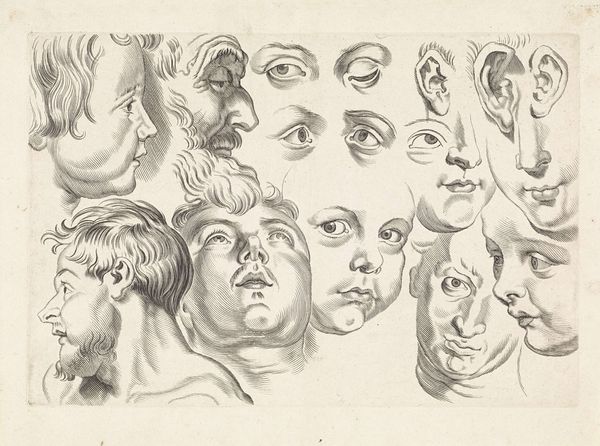
drawing, print, paper, ink, pencil, graphite, pen
#
portrait
#
drawing
# print
#
pencil sketch
#
charcoal drawing
#
paper
#
11_renaissance
#
ink
#
coloured pencil
#
pencil
#
graphite
#
pen
#
academic-art
Dimensions: 190 × 140 mm
Copyright: Public Domain
Editor: This is Abraham Bloemaert's "13 Sketches of Various Faces," date unknown. It’s a drawing composed of pen, ink, pencil, and graphite on paper. I'm struck by how expressive each of these individual faces is, even though they're just sketches. What can you tell me about it? Curator: What strikes me immediately is the inherent power dynamic embedded within the academic artistic practice of the time. Consider these faces, likely models, subject to the artist’s gaze, their expressions meticulously studied and categorized. How do we interpret this act of observation and rendering within a broader framework of societal hierarchies? Editor: So, are you saying that these sketches, beyond just being studies of facial expressions, also reflect the social dynamics between the artist and the people he's depicting? Curator: Precisely. Think about the class and gender implications. Were these paid models? Were they coerced? The act of artistic representation is never neutral; it's always laden with social and political meaning. Bloemaert, like many artists of his time, was contributing to a visual language that reinforced certain power structures. Editor: I hadn’t really considered the relationship between the artist and the models like that. It feels like something to question, particularly in this case since it is difficult to ignore the possible imbalance of power. Curator: It’s crucial that we do. By questioning these dynamics, we can begin to understand how art both reflects and shapes our perceptions of the world, particularly the era it reflects. The composition itself encourages comparative analysis between genders and implied economic positions, all mediated through Bloemaert’s hand and perspective. Editor: That's given me a lot to consider. It changes the way I see not only this drawing, but the artist’s purpose and practice as well. Curator: I hope it helps foster awareness. Examining art through a critical lens reveals the complex interplay between aesthetics and power.
Comments
No comments
Be the first to comment and join the conversation on the ultimate creative platform.
